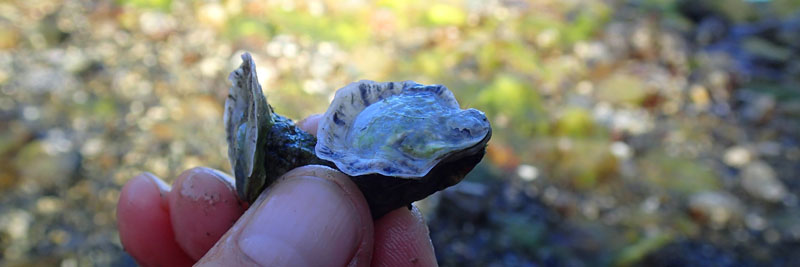
Olympia Oyster (Ostrea lurida)
Pacific Rim National Park Reserve
ʕuuštis
Found only on the west coast of North America, the Olympia Oyster was once abundant, but is now listed as a species of Special Concern. To learn more about the importance of Olympia Oysters and how you can show some love for our local oysters continue reading below!
Three Reasons to Love the Olympia Oyster:
1. They are long-time locals

The Olympia Oyster is the only oyster species native to the coast of British Columbia. All other oyster species found in BC were introduced for commercial harvest. The historically abundant Olympia Oyster is now the least common species and only occurs in localized isolated areas, one of which is within the Broken Group Islands of Pacific Rim National Park Reserve.
2. They are mighty mollusks.
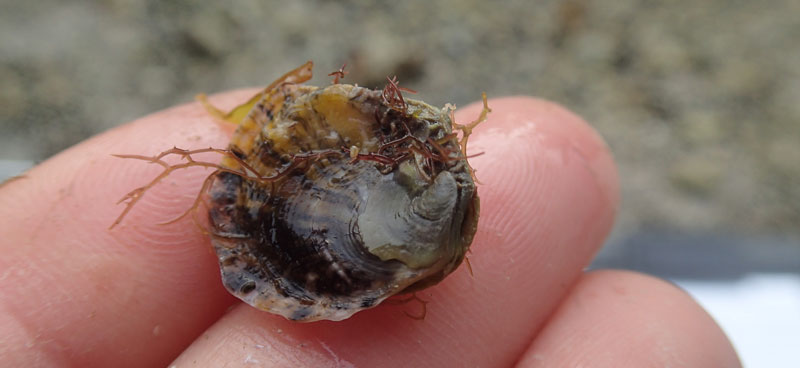
Olympia Oysters may be the smallest oyster species in BC, but they certainly play a big role within marine ecosystems. Olympia Oysters are important prey for many marine invertebrates and birds. As filter feeders, they remove particles from the water column which helps clarify water. Also, Olympia Oysters can create habitat for other species and stabilize shorelines through the creation of reefs. Providers, cleaners, and ecosystem engineers, Olympia Oysters are far from selfish shellfish!
3. They face big challenges
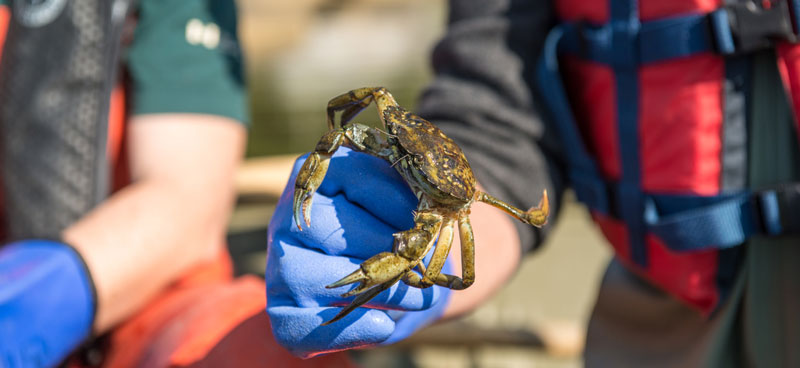
In the past, Olympia Oysters were depleted due to overharvesting and were replaced by non-native oyster species thought to be more suitable for commercial harvest. Along with introduced oysters came a number of non-indigenous predators and parasites that continue to threaten the recovery of Olympia Oysters. Invasive European Green Crabs, pollution, and human disturbance of habitat also pose serious risks for Olympia Oysters. It’s easy to see why they need a helping hand!
Three ways to care for Olympia Oysters:
1. Care for their habitat
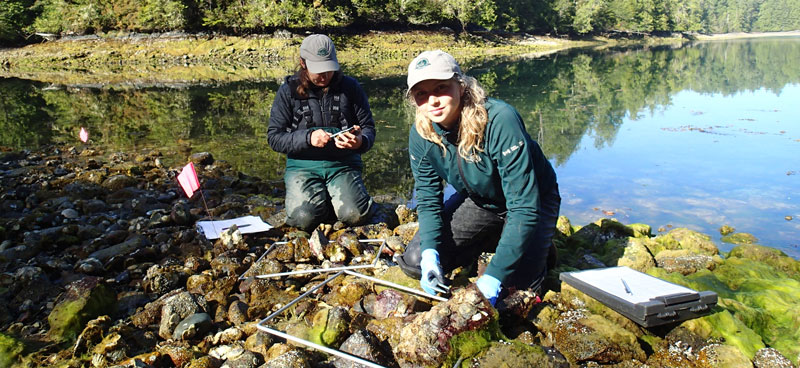
Parks Canada’s action:
Maintaining stable population numbers of Olympia Oysters in BC is one of many long-term management goals to help with their recovery. The Broken Group Islands in Pacific Rim National Park Reserve are home to several Olympia Oyster sites. Parks Canada monitors the relative abundance of Olympia Oysters on a regular basis. Long-term monitoring data is critical to understanding the recovery of a species at risk like Olympia Oysters.
Action you can take:
Be mindful of your impacts on Olympia Oysters and their habitat. At first glance oysters may just look like rocks, but they are intricate and sensitive animals that require our care. Tread lightly when exploring the intertidal, and if you move rocks make sure you put them gently back in their place.
2. Keep an eye out for invasive threats
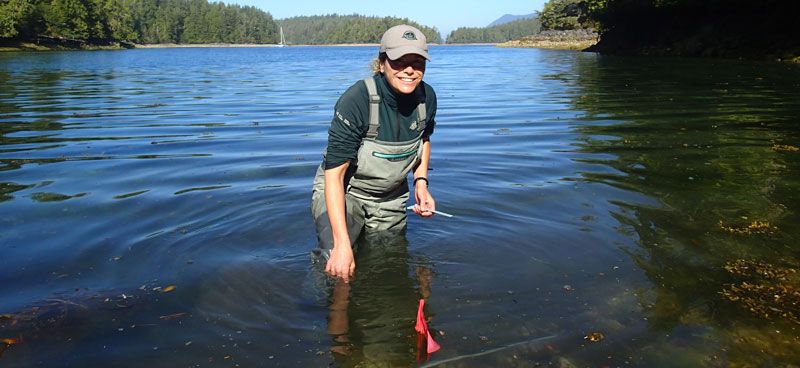
Parks Canada’s action:
Pacific Rim National Park Reserve monitors and removes invasive European Green Crabs within the Broken Group Islands. The data collected helps us better understand how populations of European Green Crabs are spreading and their impacts on marine ecosystems.Action you can take:
Help contribute to the science by combating aquatic invasive species. Learn more about the aquatic invasive species impacting our marine ecosystems here. If you catch a European Green Crab, report it by phone (1-888-356-7525) or by email. Include a photo, identifying features, the exact location and the date of your observation.
3. Give them time to recover
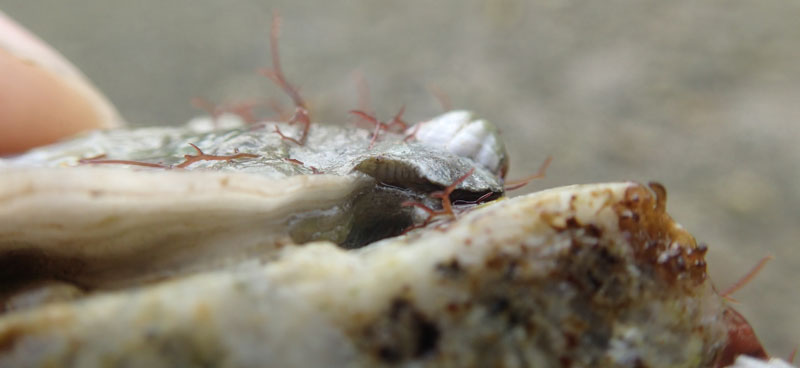
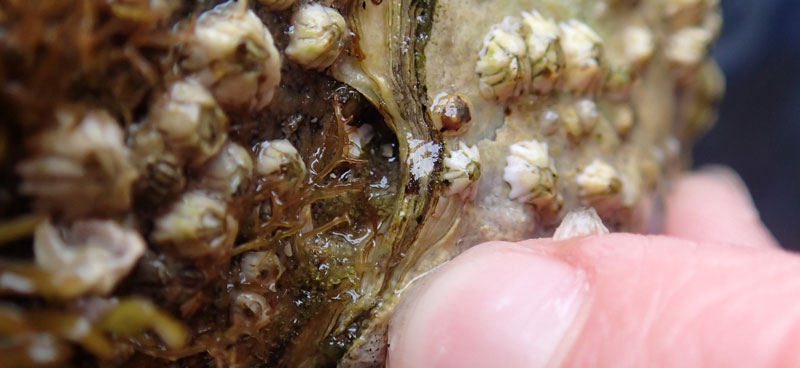
(Pictured are the “chomata”, little ridges along the hinge which are an identifying feature of Olympia Oysters.)
Parks Canada’s action:
Currently commercial and recreational harvesting of Olympia Oysters is prohibited to help give them much needed time to recover. Parks Canada Wardens in Pacific Rim National Park Reserve help to enforce protection of this vulnerable species within national park reserve shores and waters.Action you can take:
If you harvest other oysters, do so responsibly in order to avoid accidentally harvesting Olympia Oysters. Make sure you know how to tell the difference between species. Olympia Oysters are much smaller than Pacific Oysters, only reaching 90 mm in diameter. To prevent the accidental harvest of Olympia Oysters it is recommended to only harvest Japanese Oysters with a minimum size of 5cm. Know before you go and ensure you understand the limits, closures, and information found on the Department of Fisheries and Oceans website.
For more information about the Olympia Oyster on the Species at Risk Registry
- Date modified :